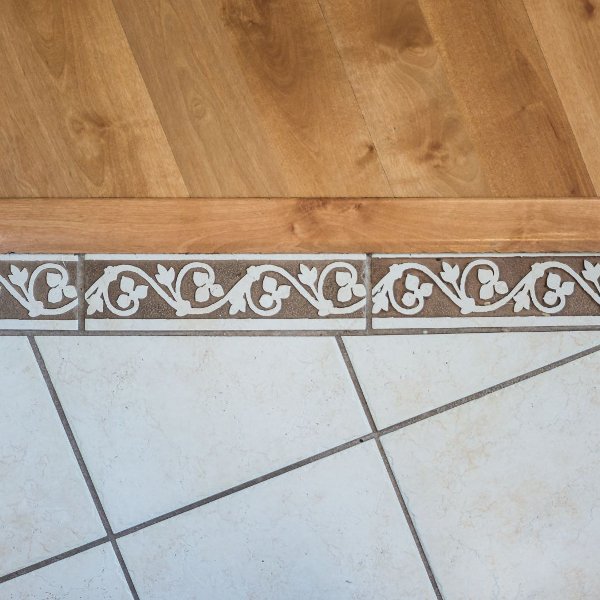Blog > Understanding Transition Moldings for Flooring: A Key Element for Seamless Floors
Understanding Transition Moldings for Flooring: A Key Element for Seamless Floors
Monday, November 18, 2024

When it comes to installing new floors in your home, you may focus on choosing the right material, color, and style to match your decor. However, one often overlooked yet essential component of a professional and polished flooring installation is transition moldings. Transition moldings are the finishing touches that help ensure smooth and seamless transitions between different types of flooring in a space. Whether you’re changing from hardwood to carpet or tile to vinyl, transition moldings provide both functional and aesthetic benefits.
What Are Transition Moldings?
Transition moldings are trim pieces that bridge the gap between two different types of flooring or two rooms with the same floor covering. They are designed to create a smooth, cohesive look and to accommodate the expansion and contraction of materials, which naturally happens as the seasons change. Without proper transition pieces, the flooring may appear jagged or unfinished, and it may be susceptible to wear and damage at the seams.
These moldings are not only about appearance—they also serve a practical purpose. They help manage floor height differences, protect edges from damage, and keep your floor intact over time.
Why Are Transition Moldings Important?
- Smooth Transitions Between Different Floor Types
When your flooring changes from one material to another, such as from wood to tile or from vinyl to carpet, transition moldings help create a seamless connection. Without them, the change between floors can look jarring and unprofessional. Transition strips hide the unsightly gap where two materials meet and provide a smooth transition from one surface to the other. - Height Differentials
Different flooring materials have varying thicknesses, which can result in uneven floor heights at the seams. Transition moldings help to bridge these differences, making the floor surface level and reducing the risk of tripping or damaging the edges of your flooring. - Protection of Floor Edges
The edges of your flooring, particularly wood or laminate, are vulnerable to damage. Transition strips protect these edges from foot traffic, furniture, and cleaning routines. They also keep dirt and moisture from seeping under the flooring, which could cause damage over time. - Aesthetic Appeal
Moldings are available in various styles, colors, and finishes, making it easy to match your transition strip to the overall style of your room and flooring. Whether you're going for a modern, sleek look or a more traditional, rustic appearance, there's a transition molding that can enhance the overall aesthetic of your space.
Types of Transition Moldings
There are several types of transition moldings, each designed for different types of floor transitions. Here’s a quick guide to help you choose the right one for your project:
- T-Molding
T-molding is the most common transition piece used when two floors of the same height meet, such as wood to wood or laminate to laminate. It’s shaped like the letter "T," with a wide base that fits securely over the seam and a narrow top that rests between the two floors. - Reducer Molding
A reducer molding is used to transition between two floors of different heights, such as from hardwood to carpet or vinyl to tile. The reducer gradually lowers the height from the taller floor to the shorter one, creating a smooth, sloping transition. - Threshold Molding
Threshold moldings are typically used to transition between two rooms or to cover the seam between the flooring and a doorway. They are often wider and flatter than other transition strips and are great for connecting areas that are level with each other but require a decorative finish. - End Cap Molding
End cap moldings are ideal when you need to finish a floor edge that doesn’t meet another type of flooring, such as when the edge of your floor meets a wall or is left exposed. They provide a clean, polished look and can also be used to cover the edge of a floor that ends at a threshold. - Quarter Round Molding
Quarter round moldings are often used at the edges of a floor, where it meets the baseboard or wall. While not specifically a transition piece between different flooring types, quarter round adds a finishing touch that gives the room a polished and professional look. - Stair Nose Molding
If you have stairs in your flooring project, stair nose moldings are essential. They are designed to finish the edge of a step and provide a smooth, safe transition from the top of the step to the floor.
Transition moldings may seem like a small detail in a larger flooring project, but they play a vital role in creating a polished, functional, and visually pleasing space. They not only offer protection and smooth transitions but also add a final touch of elegance that completes your floor design. Whether you're renovating a single room or tackling a whole-home flooring project, make sure you consider the right transition moldings to ensure your new floors look as beautiful as possible.
By understanding the different types of transition moldings and their importance, you'll be able to choose the best options for your home, ensuring your floors remain durable, cohesive, and stunning for years to come. For additional questions on transition molding and which is best for your home’s flooring, contact Jason’s Carpet and Tile at 954-231-4487.
